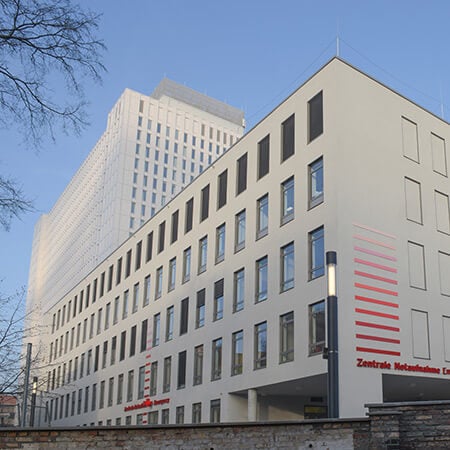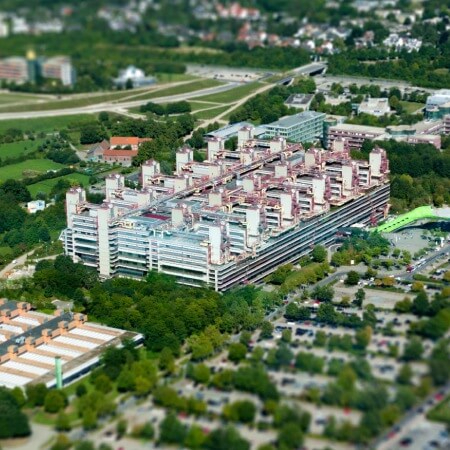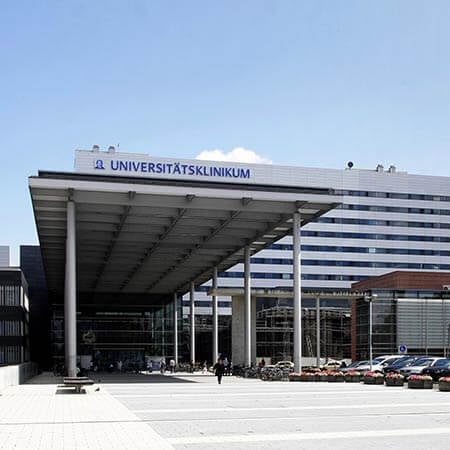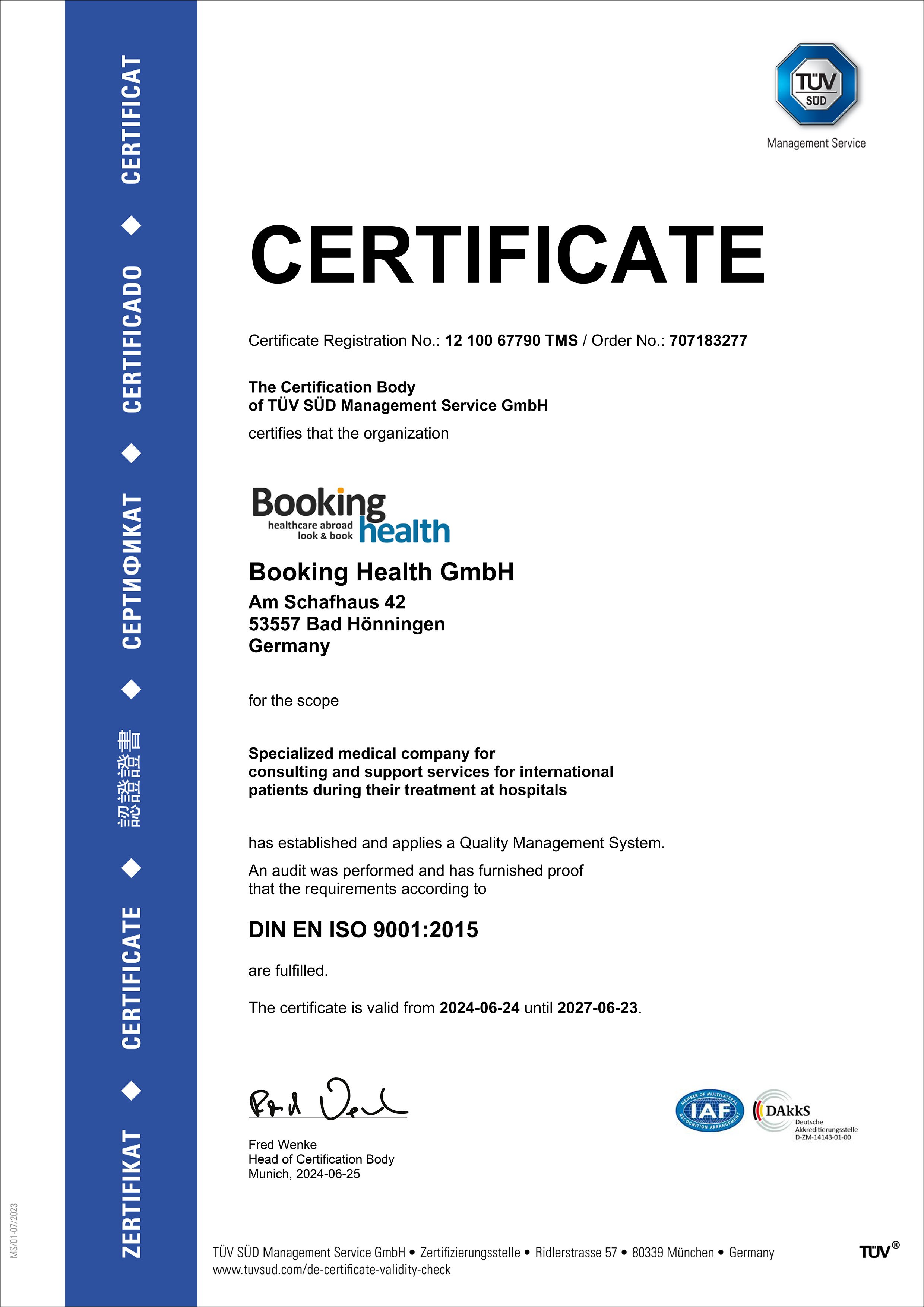Myocardial infarction is a condition in which heart muscle cells die due to oxygen deprivation. Being an acute stage of coronary heart disease, myocardial infarction is often the cause of death. In recent years, a decrease in the rate of mortality due to coronary heart disease and myocardial infarction have been recorded, but this problem remains among the main ones in medicine.
To prevent morbidity and to initiate timely medical care, each of us should understand which causes of heart attack are the most relevant, and what methods of diagnosis and treatment are offered by modern medicine.
Content
- Overview
- Atypical variants of myocardial infarction
- Causes of myocardial infarction
- Symptoms of myocardial infarction
- First aid measures
- Treatment tactics for myocardial infarction
- Is it possible to prevent myocardial infarction?
- The cost of treatment in European hospitals
- Undergoing treatment in Europe with Booking Health
Overview
First of all, it is important to understand what a myocardial infarction is. It is necrosis, that is, the death of a part of the heart muscle that develops as a result of a disturbance of blood flow in the coronary (related to the heart) artery system. The block of a coronary artery branch may be caused by thrombosis, less often by embolism, or by prolonged (more than half an hour) persistent spasm. The most common cause of heart attack is atherosclerosis. When atherosclerotic plaques form on the vessel walls, they narrow the lumen of coronary arteries and can also contribute to the destruction of their walls, which provokes blood clots and blocks.
Acute infarction causes irreversible changes in the heart muscle: the death of some of the functional muscle cells of the heart (necrosis) and their subsequent replacement by connective tissue, that is, the formation of postinfarction scar. The scar on the myocardium remains for life. It cannot be dissolved, so the heart "will always remember" a heart attack. Subsequently, the impaired blood supply to the myocardium can lead to heart failure, where cardiac insufficiency develops, i.e. the heart does not perform its functions to the full extent. Consequently, for the proper functioning of the whole body, there is simply not enough "power".
Simply put, the heart gradually begins to "die" due to acute circulatory disorders, and it is necessary to restore circulation as soon as possible in order to save the person's life. If medical care is not provided in time, a person with a heart attack can die within the first 24 hours. In general, the prognosis of the outcome of a heart attack depends on the size of the lesion of the myocardium, the severity of its course, the age of the patient, and the development and the rate of complications. But in any case, the prognosis of the disease is influenced by the timely start of treatment and its adequacy.
Atypical variants of myocardial infarction
Myocardial infarction occurring in atypical forms is possible.
The pain syndrome that occurs in a gastric variant of the disease resembles the pain of an exacerbation of gastritis and is localized in the supraspinal area. On examination, the tension of the muscles of the anterior abdominal wall may be observed. This form of a myocardial infarction usually occurs when the lower parts of the left ventricle, which are adjacent to the diaphragm, are affected.
Asthmatic variant reminds of a severe attack of bronchial asthma. The patient has choking and cough, while the typical pain syndrome is absent or weakly expressed. In severe cases, pulmonary edema may develop. The examination may reveal an abnormal heart rhythm, decreased blood pressure, and rales in the lungs. The asthmatic form of the disease most often occurs with repeated myocardial infarction, as well as due to severe cardiosclerosis.
An arrhythmic variant of myocardial infarction manifests itself as various arrhythmias (extrasystole, atrial fibrillation, or paroxysmal tachycardia) or atrioventricular blocks of various degrees. Due to the heart rhythm disturbances, the picture of myocardial infarction on the electrocardiogram may be latent.
A cerebral variant is characterized by impaired blood circulation in the cerebral vessels. Patients may complain of dizziness, headache, nausea, and vomiting, weakness in the limbs, and consciousness may be confused.
A painless variant of myocardial infarction causes the greatest difficulty in diagnosis. Pain syndrome may be completely absent, or patients may complain of vague discomfort in the chest and increased sweating. Such a form of the disease mostly develops in patients with diabetes and subsequently has an aggressive progression.
The clinical picture of myocardial infarction may sometimes have symptoms of different variants of the disease. Unfortunately, the prognosis in such cases is unfavorable.
Causes of myocardial infarction
Among the causes of such a disease as heart attack are both genetic features of the body and acquired disorders associated with concomitant diseases and certain habitual behaviors. The main cause of myocardial infarction is atherosclerosis. Cholesterol is deposited on artery walls. It causes thrombosis. A coronary vessel is blocked because a cholesterol plaque ruptures or is damaged.
Cardiovascular function deteriorates with age, so disability and mortality are more likely to occur after the age of 35-40. Statistically, in medicine, six out of a thousand people a year experience the condition.
The cause of a heart attack is often a change in the body associated with:
- Obesity.
- Diabetes.
- Blood pressure disorders.
- Smoking, alcoholism, drug addiction.
- Increased meat consumption.
- Peripheral vascular disease.
The listed causes of heart attack can be eliminated. Rarer risk factors (about 10%) include anemia, influenza, carbon monoxide poisoning, sepsis, and systemic vasculitis, which are also treatable. Cases of coronary heart disease in the family are another factor, so it is worth paying attention to cardiovascular diagnostics if such clinical dynamics took place.
Symptoms of myocardial infarction
This heart condition has rather specific symptoms, and they are usually so pronounced that they cannot go unnoticed. Nevertheless, it should be remembered that atypical forms of this disease also occur. In the vast majority of cases, for patients with a typical painful form of myocardial infarction, the doctor can correctly diagnose the disease and begin treatment immediately.
The main symptom of heart disease is severe pain. The pain that occurs with myocardial infarction is localized behind the sternum, and it is burning, piercing, or as some patients describe it – "tearing". The pain may recur in the left arm, lower jaw, and interscapular region. The onset of this symptom is not always preceded by physical exertion; the pain syndrome often occurs at rest or at night. The described characteristics of the pain syndrome are similar to those of an angina attack, yet they have clear differences. Unlike an angina attack, the pain syndrome in the myocardial infarction persists for more than 30 minutes and is not relieved by rest or repeated administration of nitroglycerin. It should be noted that even when the pain attack lasts more than 15 minutes, and the measures taken are ineffective, it is necessary to call an ambulance immediately.
First aid measures
If a heart attack is suspected, with symptoms similar to the described above, the assistance of an ambulance is necessary. Before the arrival of doctors, it is necessary to:
- Give the patient nitroglycerin and half a pill of aspirin.
- Help them to adopt a half-sitting posture.
- Unbutton the constricting clothing.
- Calm them down and prepare them to go to the hospital.
Ambulance workers will provide first aid, make an ECG and hospitalize the patient.
The main task in treating patients with the myocardial infarction is to resume and maintain blood circulation in the affected area of the myocardium as quickly as possible. The health and life of patients largely depend on the care provided at the prehospital stage.
One of the most important tasks of emergency care physicians is controlling pain attacks, because the sympathoadrenal system activation increases the load on the heart and myocardial oxygen demand, which further aggravates ischemia of the affected area of the heart muscle. Doctors often have to use narcotic analgesics to relieve retrosternal pain. Morphine is most commonly used in the prehospital phase. If the analgesic effect of narcotic analgesics is insufficient, intravenous administration of nitro preparations or beta-adrenoblockers is possible.
Restoration of coronary blood flow is no less important for physicians when treating a patient with myocardial infarction. If there are no contraindications, the doctor may start thrombolysis in the ambulance. This procedure is not indicated for all patients with myocardial infarction. The doctor determines the indication based on the results of the electrocardiogram. The effectiveness of thrombolysis directly depends on the timing of its initiation, when thrombolytic drugs are administered in the first hours after the onset of a cardiovascular accident, the probability of restoration of blood flow in the myocardium is quite high.
The decision to perform thrombolysis at the stage of transport to the hospital depends on the time factor. If the time of transporting the patient to the hospital exceeds 30 minutes, the physician of the ambulance team starts to administer the drugs.
Treatment tactics for myocardial infarction
The best method to restore blood flow and patency of the coronary arteries is immediate angioplasty surgery, during which a stent is placed in the artery. Stenting should also be performed within the first hours of the onset of myocardial infarction. In some cases, urgent coronary bypass surgery is the only way to save the heart muscle.
A large number of different drugs can be used in the therapy of this disease, because in the treatment of myocardial infarction it is necessary to perform several tasks at once, including:
- Prevention of thrombosis and blood-thinning is achieved with the help of drugs from the groups of anticoagulants and antiaggregants.
- Limitation of the area of myocardial damage is achieved by reducing the oxygen requirements of the heart muscle, for which medicines from the groups of beta-blockers and ACE inhibitors are used.
- Pain syndrome relief is achieved by using non-narcotic and narcotic analgesics, which also reduce myocardial oxygen demand and reduce the load on the heart.
- Blood pressure levels are normalized through the intake of hypotensive drugs.
- In the event of cardiac rhythm disturbances, the patient is prescribed antiarrhythmic drugs.
These are not all the groups of drugs that can be used to treat myocardial infarction. The treatment tactics depend on the overall condition of the patient, the presence of concomitant diseases of the kidneys, liver, and other organs, as well as many other factors. Therefore, the treatment of this severe disease should only be carried out by a qualified doctor. Self-treatment is unacceptable and can lead to the death of the patient.
Is it possible to prevent myocardial infarction?
The consequences of a myocardial infarction always harm the entire body. Of course, this depends on how extensive the myocardial damage is. But, in any scenario, patients who have had a myocardial infarction often develop heart rhythm disturbances. Because of the necrosis of the myocardium and the formation of a scar, the contractile function of the heart decreases, resulting in heart failure. A heart aneurysm, a life-threatening condition requiring surgical treatment, may develop as a result of an extensive infarction and large scar formation. Not only does an aneurysm impair heart function, but it also increases the likelihood of blood clots forming in the heart, and the risk of rupture is high as well. Therefore, the first symptoms of heart problems should not be ignored.
The prevention of this disease is divided into primary and secondary. The primary one is aimed at preventing the occurrence of myocardial infarction, while the secondary serves to prevent the recurrence of cardiovascular failure in those who have already suffered it. The prevention is necessary not only for patients suffering from cardiovascular diseases, but also for healthy people, and comes down to the elimination of factors that increase the risk of acute episodes.
The preventative measure includes:
- Bodyweight control. In people who are overweight, the load on the heart increases, leading to the high risk of hypertension and diabetes.
- Regular physical activity. Physical activity helps to improve metabolism, and, consequently, to reduce body weight. It is proven that regular exercise reduces the risk of recurrent myocardial infarction by 30% in those who have already had it. The exercise routine and the level of load should be chosen by a doctor.
- Giving up bad habits. Scientists proved long ago that smoking and alcohol abuse greatly increases the risk of cardiovascular disease. If people are not willing to give up their bad habits, the risk of repeated myocardial infarction doubles.
- Control of blood cholesterol levels. All people over 45 years of age should regularly monitor lipid metabolism indices, since atherosclerosis, which develops when it is disturbed, is one of the main causes of cardiovascular accidents.
- Control of blood pressure. At the steady increase of blood pressure above 140/90 mm Hg, its medical correction is necessary because in hypertension the load on the heart is increased significantly.
- Control of blood glucose levels. This is necessary to detect disruptions of carbohydrate metabolism and prevent diabetes, which also increases the risk of myocardial infarction.
- Proper diet. Restriction of the intake of salt, foods containing large amounts of cholesterol and saturated fats is recommended. Increase the number of fruits and vegetables containing fiber, vitamins, and minerals in the diet.
The cost of treatment in European hospitals
The cost of treatment in different European hospitals may vary. However, it would be incorrect to say that the cost of treatment in private European hospitals is higher than in state ones. Considering the fact that foreigners can undergo treatment in both private and state hospitals in Europe, it is important to know the prices for medical services provided by both.
The prices depend on many factors. However, it should be noted that the cost of treatment also depends on the specialist who handles your treatment. For example, the prices fluctuate if it is the leading doctor or the famous professor of medicine that handles your treatment.
If you require expertise regarding price formation and current rates of the cost of treatment in European hospitals, feel free to contact Booking Health.
Undergoing treatment in Europe with Booking Health
Booking Health offers you comprehensive support in organizing your trip to specialized European hospitals for diagnosis, treatment, or rehabilitation after a heart attack.
Medical services for patients who had a heart attack are one of the major fields of medicine in Europe. European hospitals offer comprehensive programs for patients. As a rule, these programs include measures for prevention, diagnostics, comprehensive conservative therapies or surgical treatment of myocardial infarction, and rehabilitation in Europe.
And you have to know that all of this is available to you. All you need to do is fill in the request form on the Booking Health website, and a medical advisor will be assigned to you.
Authors: Dr. Nadezhda Ivanisova, Dr. Sergey Pashchenko



















